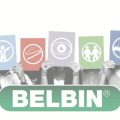The employee experience has become an integral part of how successful companies operate. The employee experience refers to the complete journey of employees from recruitment and onboarding, to working within the company, and beyond. It is focused on creating a positive work environment that fosters productivity, satisfaction, collaboration and loyalty amongst employees while also providing them with growth opportunities.
Let me ask you- What are the moments you remember most vividly from your time at work? Chances are, they’re not the times when you were just putting in the hours and going through the motions. They’re the times when something happened that made you sit up and take notice- a project that went above and beyond, a difficult problem that you and your team solved together, or a recognition from your boss that made you feel appreciated.
These moments of elevation are so important because they remind us why we do what we do. They inspire us to be our best selves. And when we have more of them, we’re more engaged, more productive, and more likely to stick around for the long haul.
In the past, employee experience was something companies paid lip-service to or didn’t consider at all. Now, it is an area that is receiving more attention, with research suggesting a direct correlation between the quality of an employee’s experience and their performance.
This focus on employee experience has only become more important in recent years as generational gaps have widened due to technological advancements. Organisations now need to create diverse experiences tailored to each generation’s needs and expectations from working life. For example, Millennials may be attracted by development opportunities while Baby Boomers may prioritise retirement plans.
While the employee experience seems simple enough to grasp, designing and implementing a great employee experience is a complex process. In order to do so, businesses need to have a comprehensive understanding of the employee lifecycle and the pillars behind a great employee experience.
The employee lifecycle is the framework used to understand the various phases of an employee’s journey within a company. It outlines the steps each individual goes through, from recruitment and onboarding, to day-to-day work and eventual departure. This allows employers to create a personalised experience tailored to each stage, identify areas that need improvement, and ultimately build a winning team.
Each phase of the employee lifecycle has its own unique challenges and opportunities. For example, during recruitment employers must ensure they find the right candidates while minimising costs; during onboarding they must help new hires transition smoothly into their roles while providing opportunity to build connection with existing teams; and during retention they must provide a reason to stay. By understanding these different stages in detail, businesses can craft experiences that will ensure employee engagement and satisfaction throughout their tenure.
Here are our top tips for improving the employee experience at each stage of the employee lifecycle in 2023:

Attraction
The employee experience begins well before the first day of work; in fact, it begins well before a potential employee applies for a position. The attraction phase is an important step in the employee lifecycle because it sets the tone for any future relationship with a candidate or potential hire. To attract and engage talent, businesses must demonstrate their commitment to creating a positive work environment. This can be done by highlighting the company culture, values, career development opportunities, and benefits offered to employees. In 2023, employers should leverage modern technologies such as AI-driven recruitment platforms, job boards and social media to maximize their reach and ensure they are reaching the right candidates. You need to know what type of candidates you want to attract and, based on that, craft messaging and use channels that will put you exactly in front of those people. The attraction phase in an opportunity for organisations to make the all-important ‘first impression.’

Recruitment
The recruitment phase is the first contact candidates have with a company and it continues to shape their impression of the organisation. This is a good time to consider those generational gaps mentioned above. With Gen Z set to enter the workforce, there will be an expectation of speed. During this process, businesses must move quickly to ensure they don’t lose out on top talent while also ensuring they make informed decisions by carefully assessing potential hires. Embracing digital tools such as automated scheduling systems, virtual interviewing software and mobile optimised application processes can help improve the candidate experience and streamline the recruitment process.
Behavioural profiling is also increasingly popular to get a better understanding of the candidate’s character, attitude and motivations whilst showing the candidate that the organisation is interested in them as an individual. Behavioural profiling is an incredibly effective tool for identifying who you need on which team to get a specific outcome in the fastest possible time frame and with the right amount of people.
According to Gartner’s HR survey, 36% of HR leaders say their recruiting strategies fall short when it comes to finding the skills they need.

Onboarding
Onboarding is the process of welcoming a new hire into your organisation and helping them become familiar with the ins and outs of their new job. It’s an incredibly important phase in creating a successful employee experience as it sets the scene for the workplace environment.
This phase of the employee lifecycle is all about making sure new hires feel welcomed and that they have everything they need to successfully transition into their roles. This means having an effective onboarding process with clear goals, providing comprehensive training for each role, introducing new hires to existing team members, setting up regular check-ins to discuss progress and ensure expectations are met. This applies to remote, hybrid and in person work environments so organisations will need to pay close attention to perfecting the onboarding process regardless of distance. Offering opportunities for new teams to bond and break the ice in person will help build trust and connection between new and existing team members while setting the foundation for a moment of elevation.

Development
The development phase of the employee lifecycle focuses on helping employees grow professionally and personally through training, mentorship, team workshops and career advancement. This is an exciting time for learning and development, as this past year has brought a whole host of changes and innovations to the sector. There has been a rise in virtual classrooms, microlearning capabilities, interactive content, and real-time analytics technology; all of which can be planned into sophisticated learning architectures.
Regardless of which methods you choose to implement, giving your employees opportunities to learn new skills can be beneficial both in boosting your employee experience—and the bottom line!
Nearly all employees are looking for a growth path within their career and 44% of employees feel like their current companies don’t offer compelling career paths, according to Gartner’s recent study.

Retention
Retention is the phase of the employee lifecycle in which employers strive to keep their workers engaged and motivated. Leaders should use data-driven insights to gain visibility into what motivates individual employees and invest in culture initiatives that will help drive retention. Retention incentives might look a little different for each employee- the key here is personalising the experience. You can do this through one-on-ones with managers or through surveys requesting feedback. Whether that’s offering flexible working hours, competitive pay packages, or something else entirely; it’s important to take the time to understand what your employees value most.
With the great resignation taking centre stage in 2022, its only natural to expect 2023 to be the year of the great retention. In the year ahead we will see an increased focus on employee mental health and well-being initiatives, with organisations taking steps to offer a more holistic approach to supporting their workforces. Organisations need to create a comprehensive approach to employee wellbeing that includes both physical and psychological support. This could include initiatives such as on-site childcare, access to gym memberships, regular team building, and mental health support.
By taking the time to understand the needs of your current and future employees, investing in employee development programs, and finding creative ways to personalise the experience for each individual—employers can be sure that they are doing their best to create an exceptional employee experience, and ultimately be an employer of choice in 2023.



Recent Comments